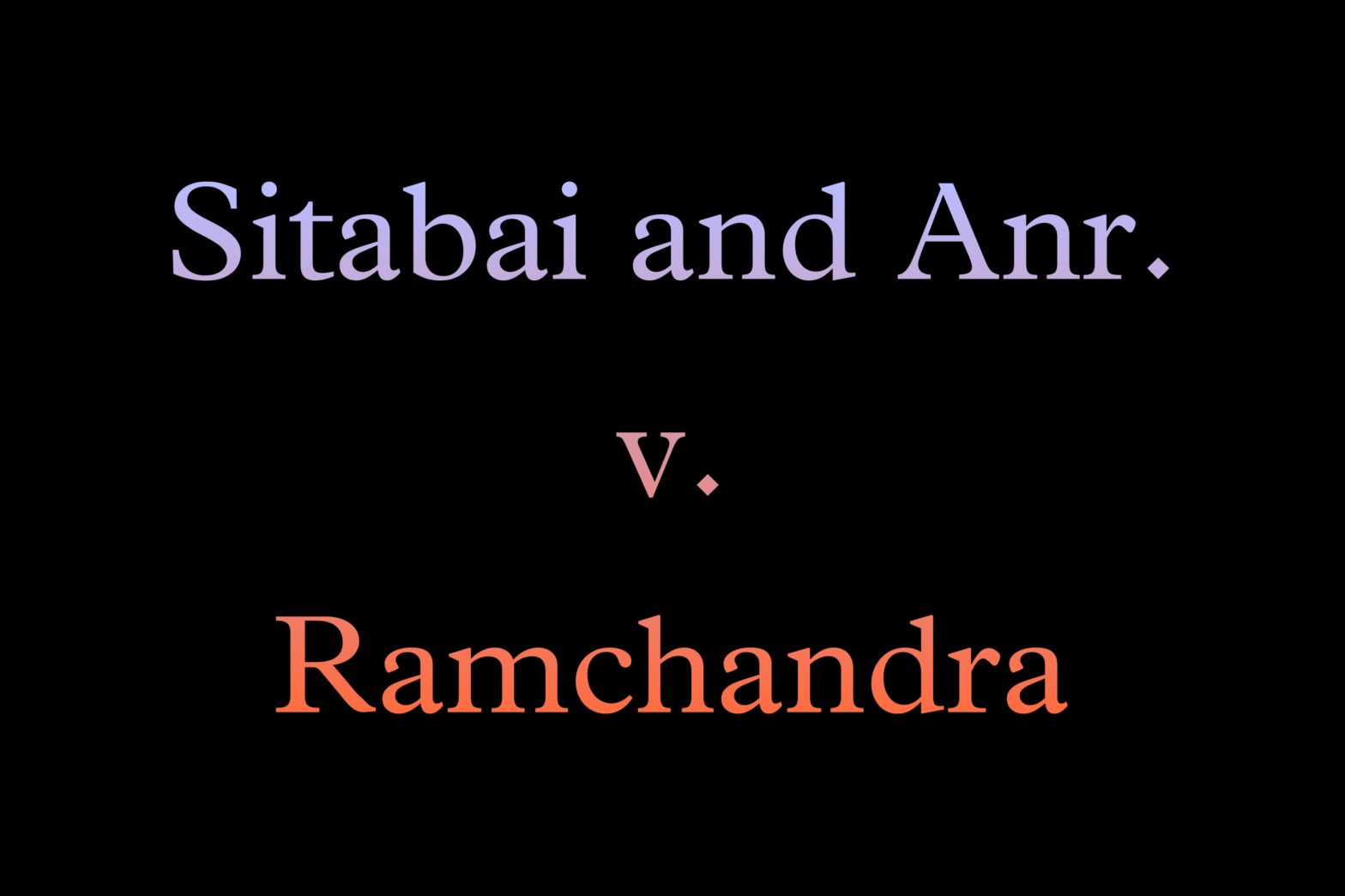Case name: – Smt. Sitabai and Anr. Vs Ramchandra
Citation: – AIR 1970 SC 343
Date of judgement: – 20 August, 1969
Bench: – J.C Shah (Acting C.J.) and V. Ramaswami and A.N. Grover, JJ
Plaintiff: – Smt. Sitabai
Defendant: – Ramchandra
Facts
Appellant is the widow of Bhagirath, Dhulichand’s brother, who passed away. Following Bhagirath’s death, plaintiff Sitabai lived with Dhulichand, from whom an illegitimate child, defendant Ramchandra, was born in 1935. Dhulichand died on the 13th of March 1958.
The first appellant adopted Suresh Chandra after Dhulichand died. Meanwhile, after Dhulichand’s death, Ramchandra inherited the joint family properties.
The first appellant sued the respondent for eviction from the properties. The trial court dismissed the action. The District Court changed the decree. The high court reversed the ruling and rejected the case because the adopted son had received no coparcenary property in the joint family.
Issues
- Whether the son adopted by the widow becomes the son of the deceased husband?
- Whether such an adopted son becomes a coparcener, the character of a joint family?
Holding
The Supreme Court overturned the High Court’s decision and upheld the lower court’s decision granting the half-share of the joint family holdings.
Rationale

The Supreme Court made reference to section 11 clause (VI) and section 12 of the Hindu Adoptions and Maintenance Act, 1956, which states:
“A child to be adopted must be given and adopted by parents or by virtue of their power to transfer the child from the family of his or her birth to the family of his or her adoption”.
According to Section 12, With effect from the date of the adoption, an adopted child is considered the child of the adoptive parent for all reasons, and all relationships between the child and its biological family are deemed to be superseded by those generated by adoption within the adoptive family;
“Provided, however, that the adopted child does not divest any person of any estate that he or she owned before to the adoption.”
Arguments in the Plaintiff’s Favour
In this case, the Plaintiffs’ counsel argued on the basis of Sections 11 and 12 of the Hindu Adoptions and Maintenance Act, which provides that once a boy is adopted, he loses all links to his birth family and is replaced by those formed by the adoption in the adoptive family. As a result, the legal impact of placing a child for adoption must be to transfer the kid from the birth family to the adoptive family. As a result, the child is not just the adopted father’s but also the adoptive mother’s child. The adopted child should be assimilated into the adoptive family to which the widow belonged in a similar way.
Arguments in Defendant’s Favour
The defendant challenged the suit at the trial court at the preliminary stage, claiming that Dhulichand had given the lands to the Jagirdar during his lifetime, who resettled them with the defendant. Dhulichand had also executed a will before his death, according to the defendant, in which he wanted the defendant to take control of the entire house. However, the trial court eventually found in favour of the defendant.
Furthermore, the defendant filed an appeal with the District Judge, who changed the decision and declared that Dhulichand’s will be legitimate as far as his half-share in the house is concerned. As a result, the District judge determined that the defendant is only entitled to half of the land’s share.
The defendant also filed a second appeal with the Madhya Pradesh High Court, which reversed the order and ruled that the plaintiff was not entitled to any remedy and that the case should be dismissed totally. The adopted son did not acquire any interest in the joint family possessions, according to the High Court. Dhulichand was the sole coparcener on the date of the adoption, according to the High Court, and no one else could claim a piece of his property.
